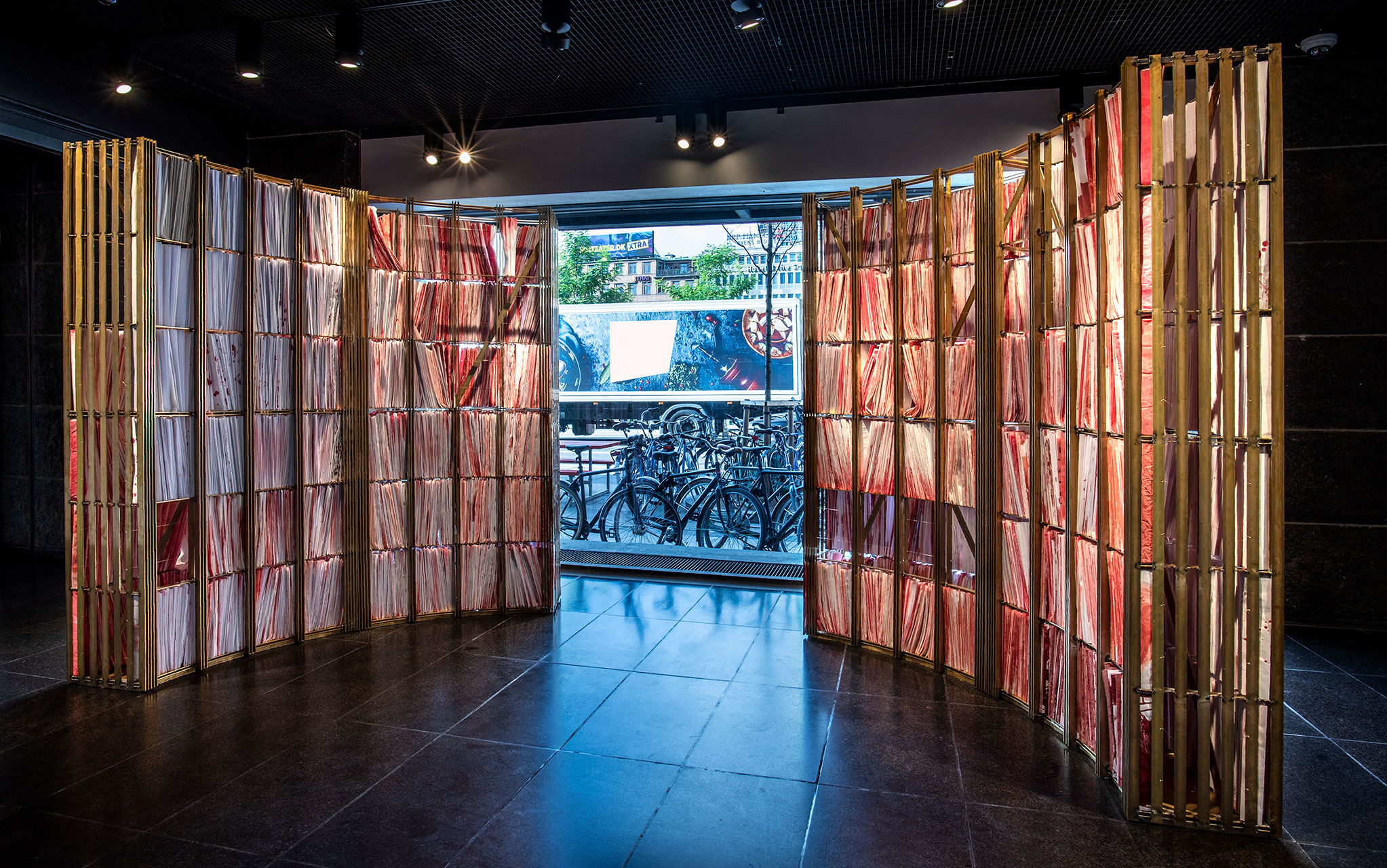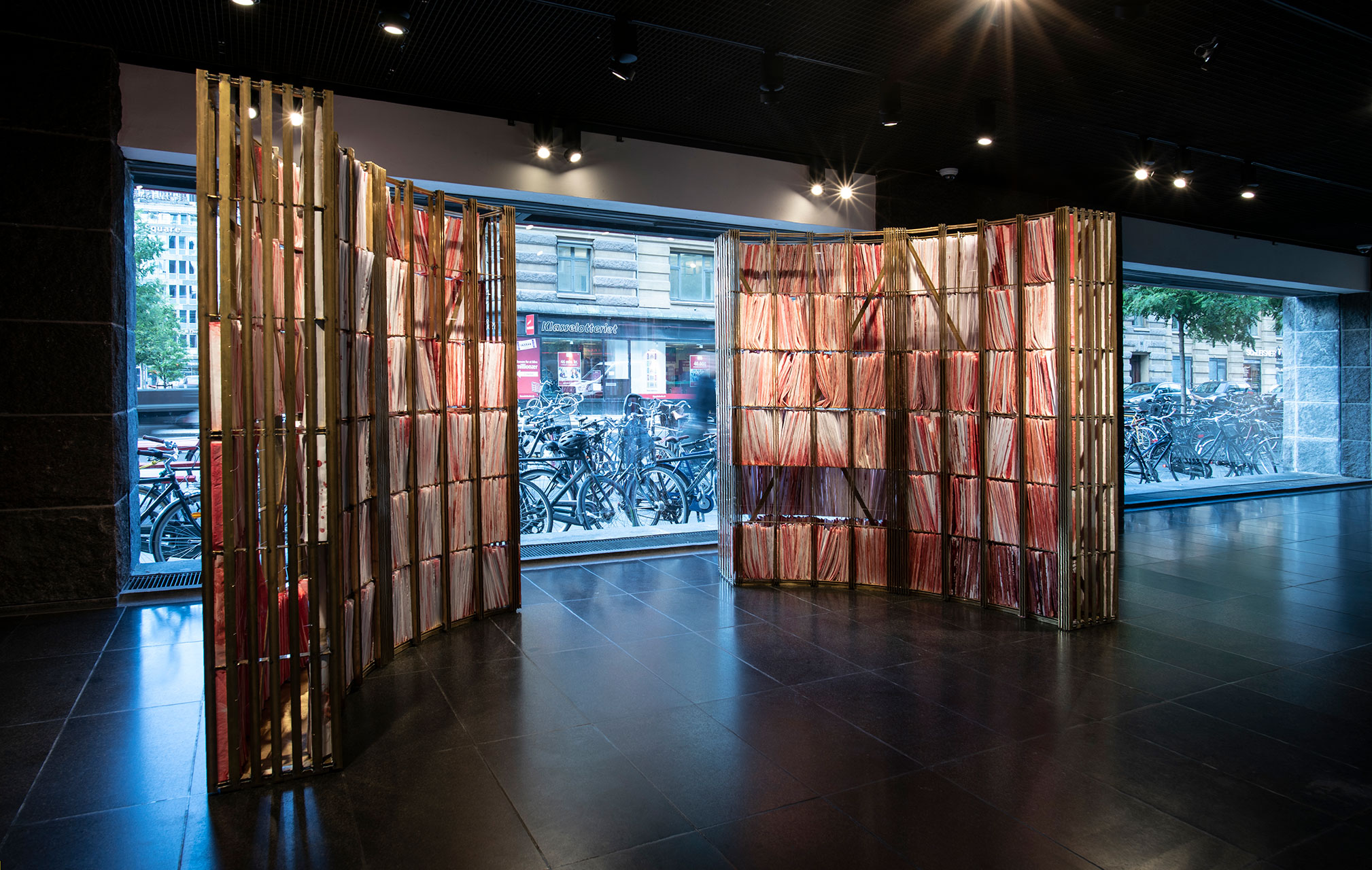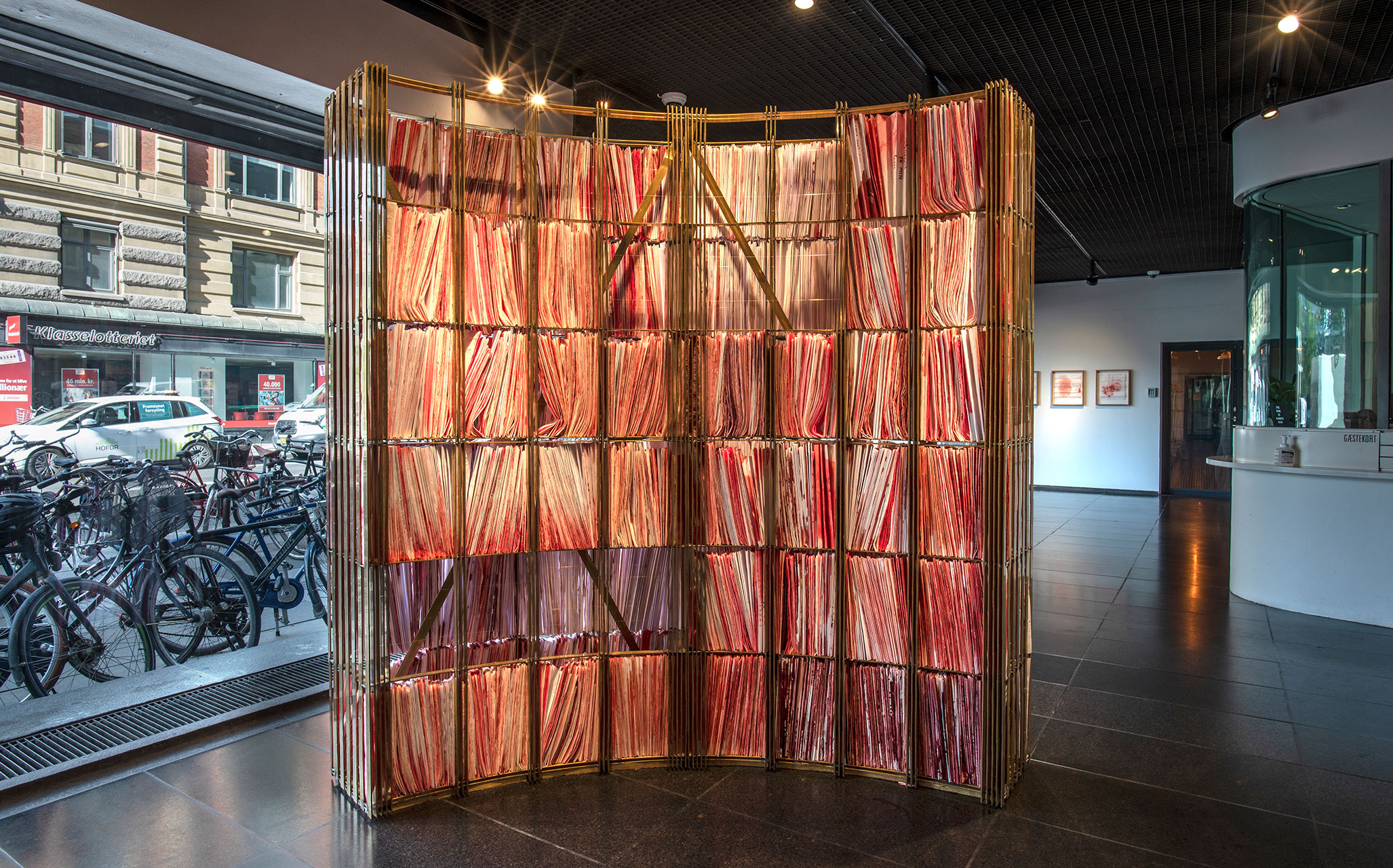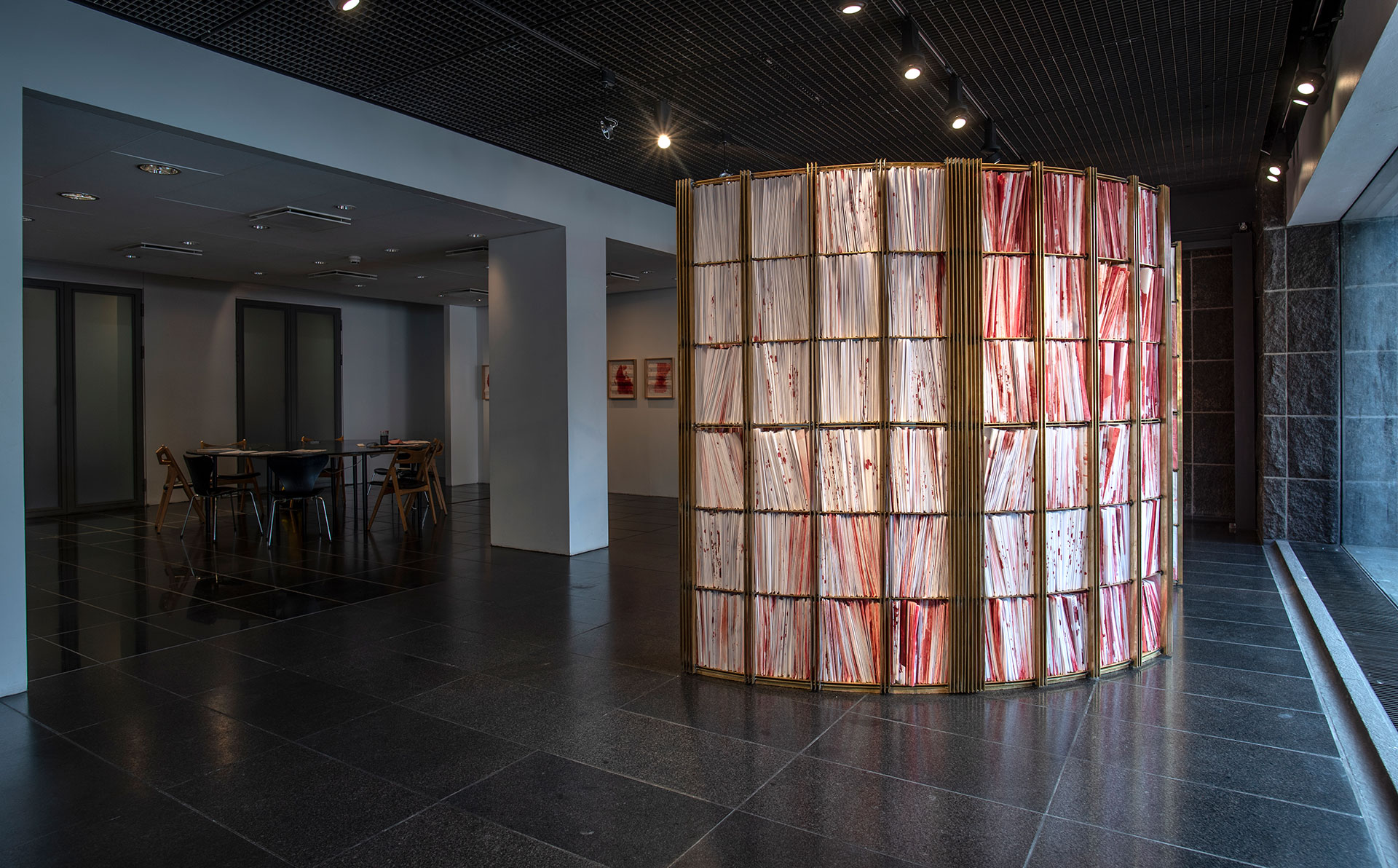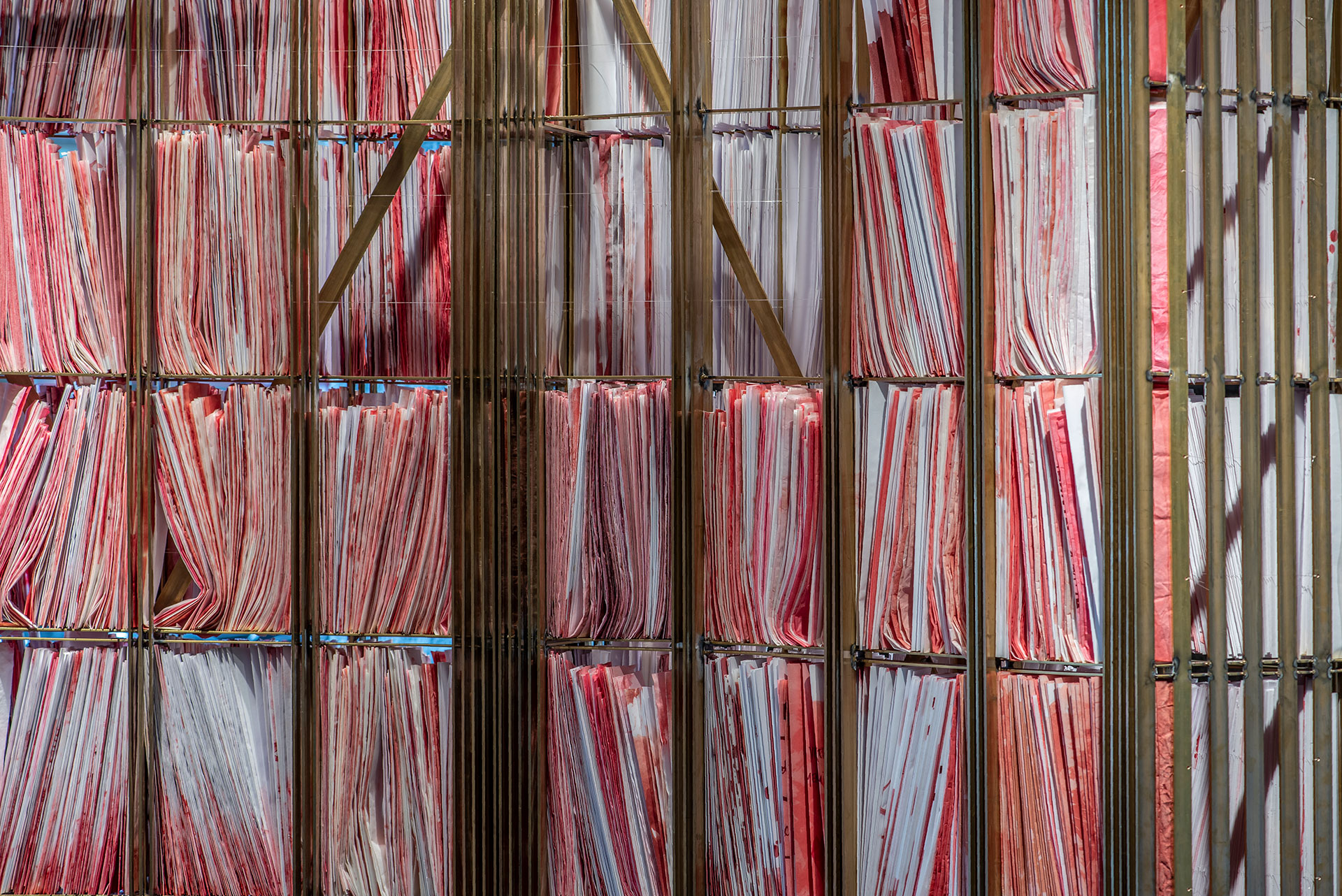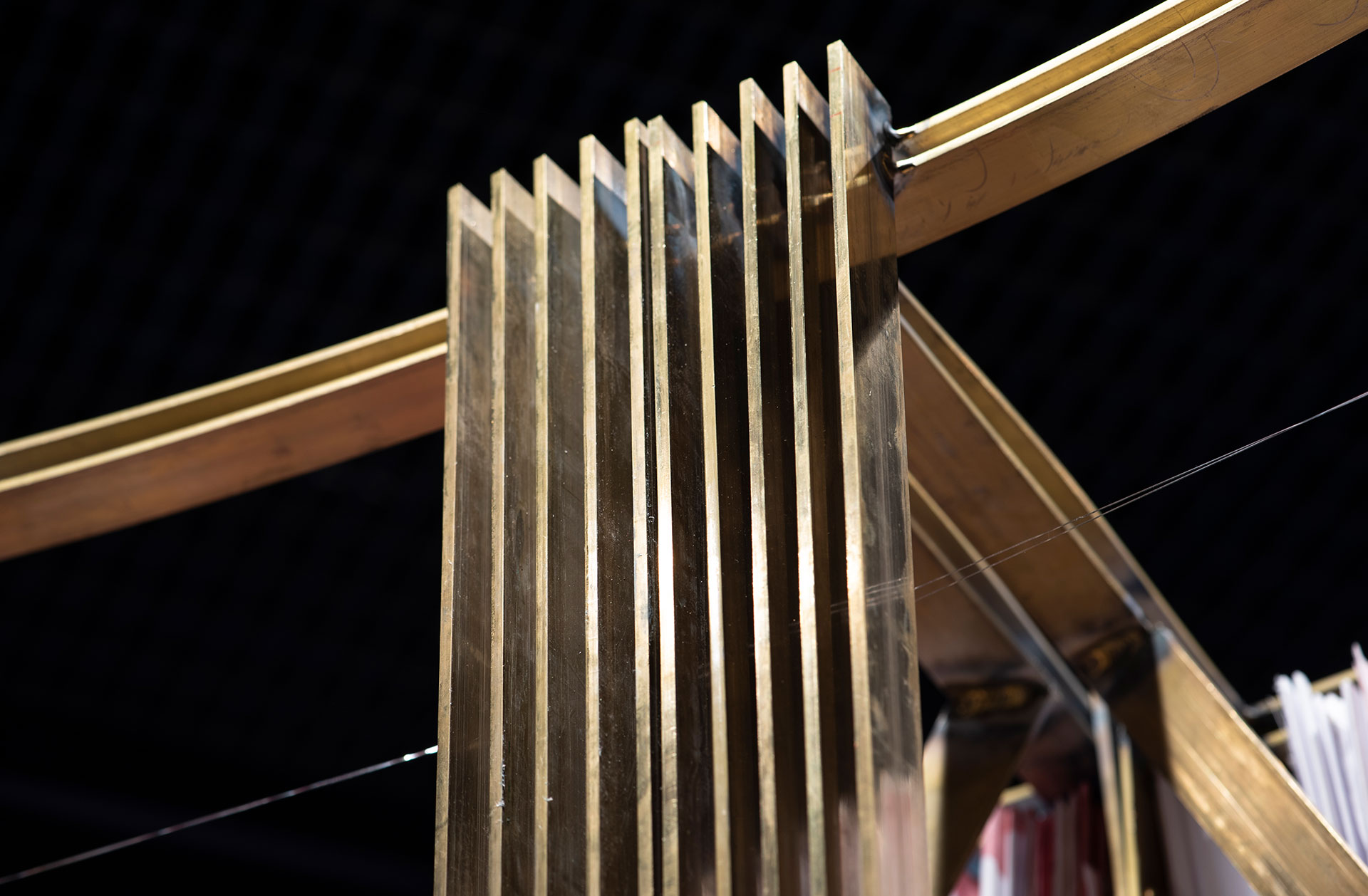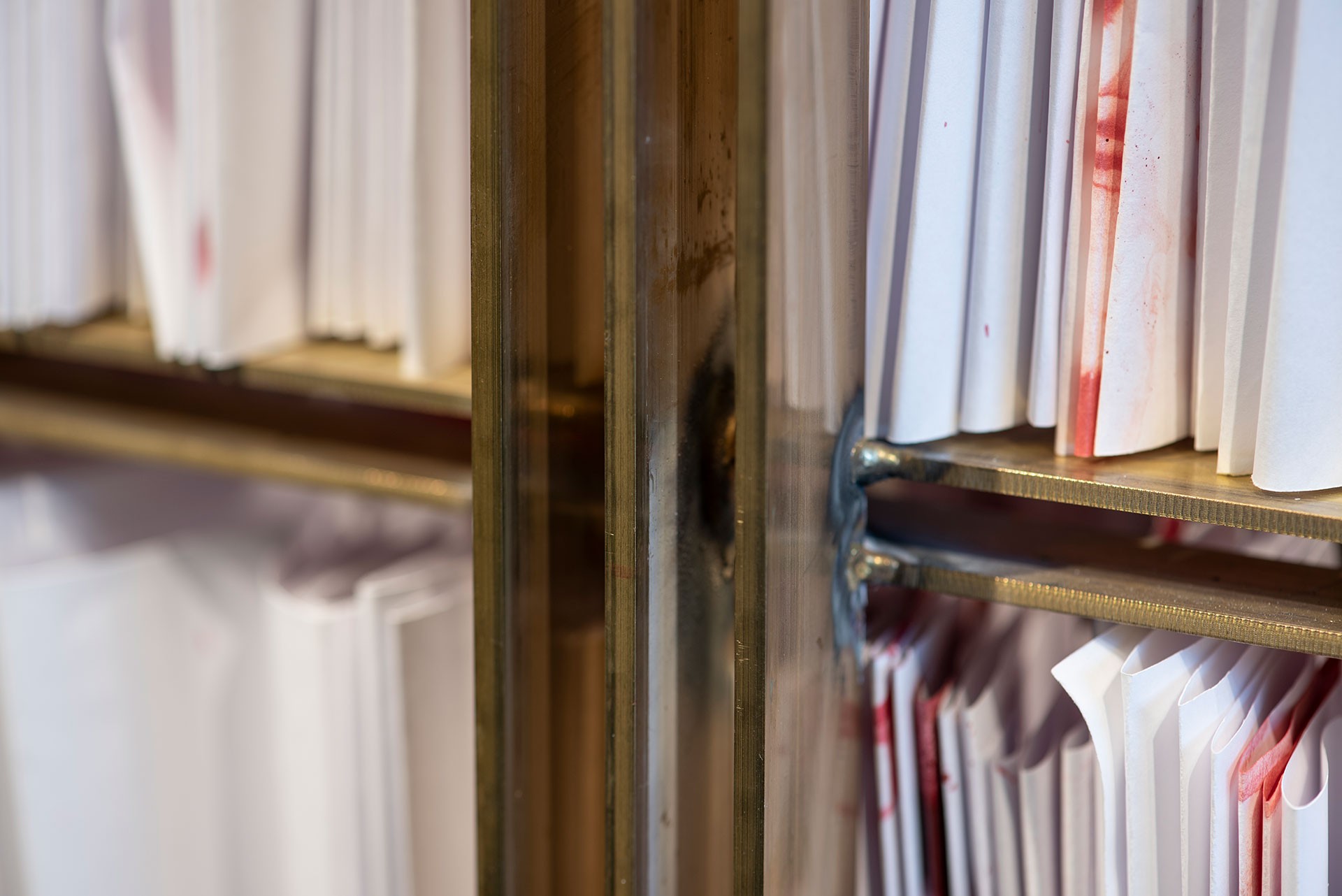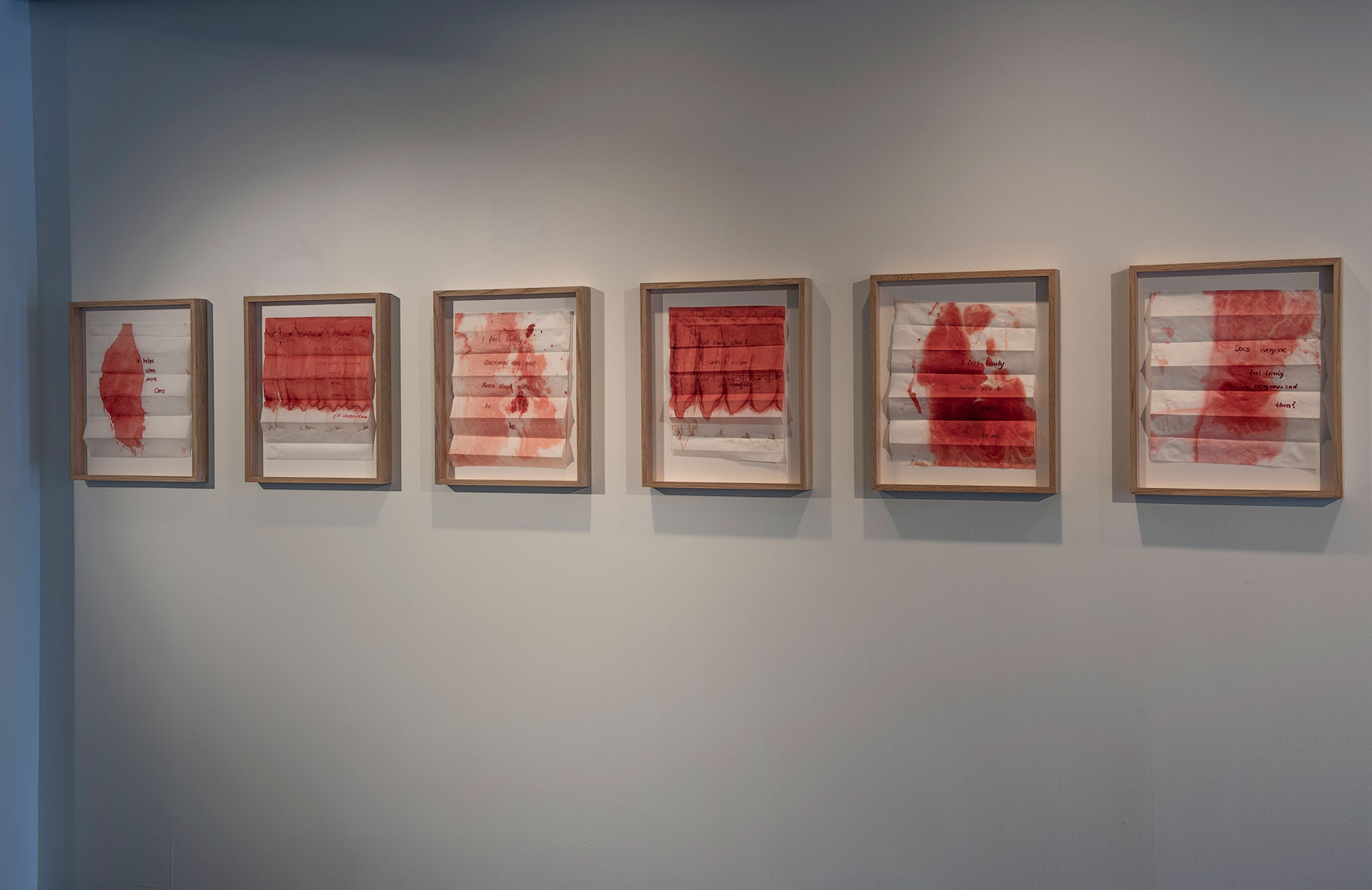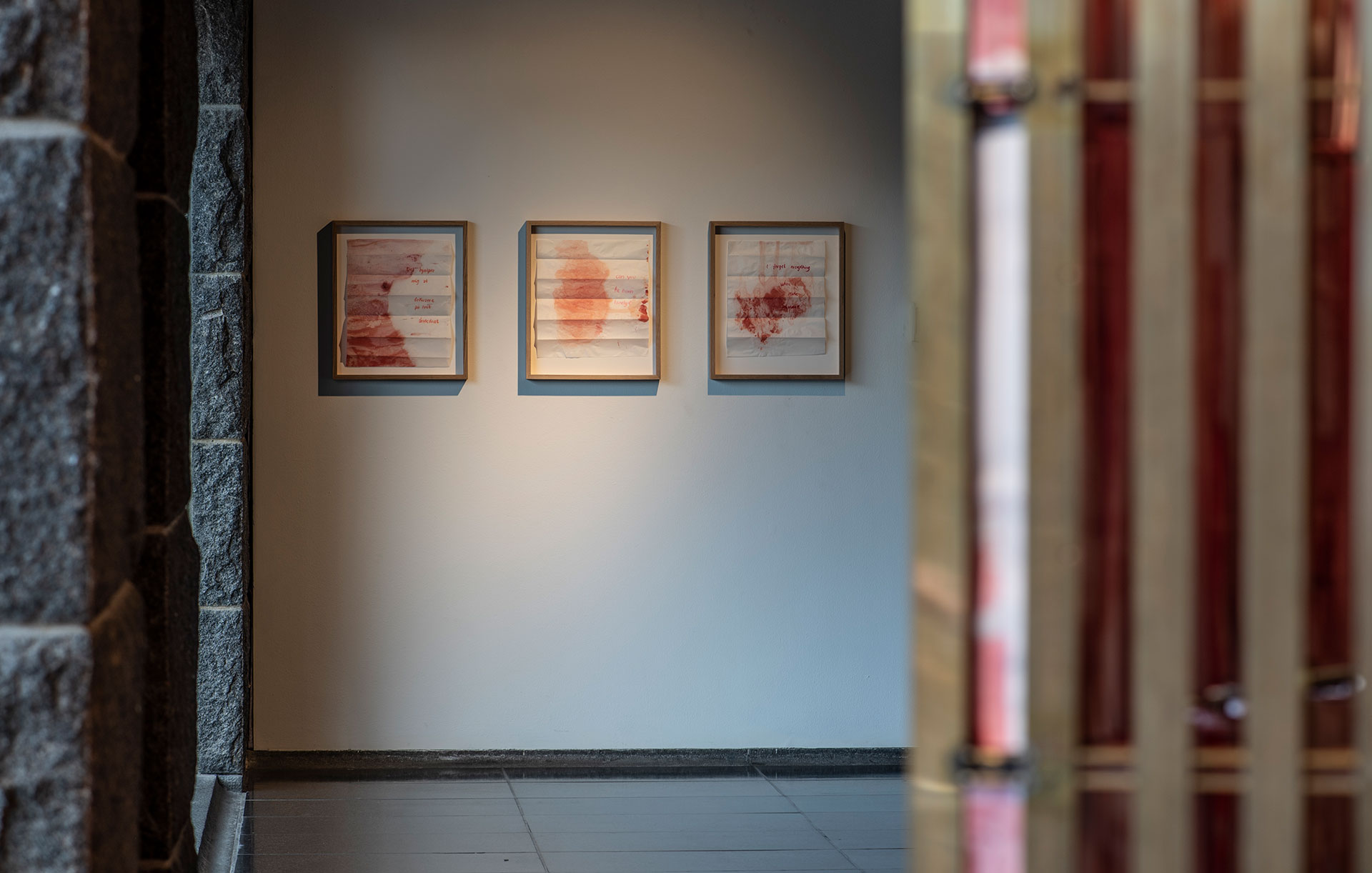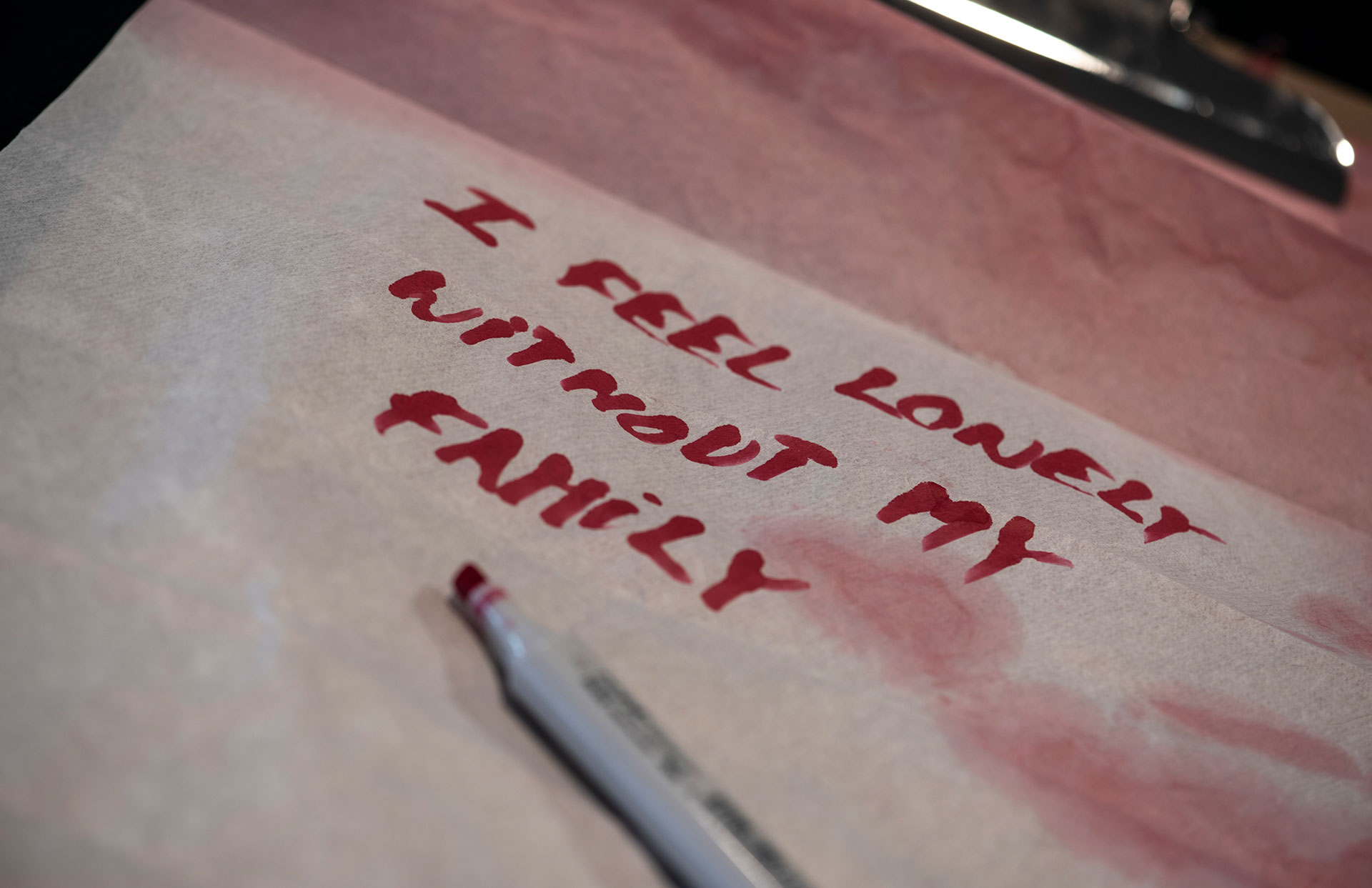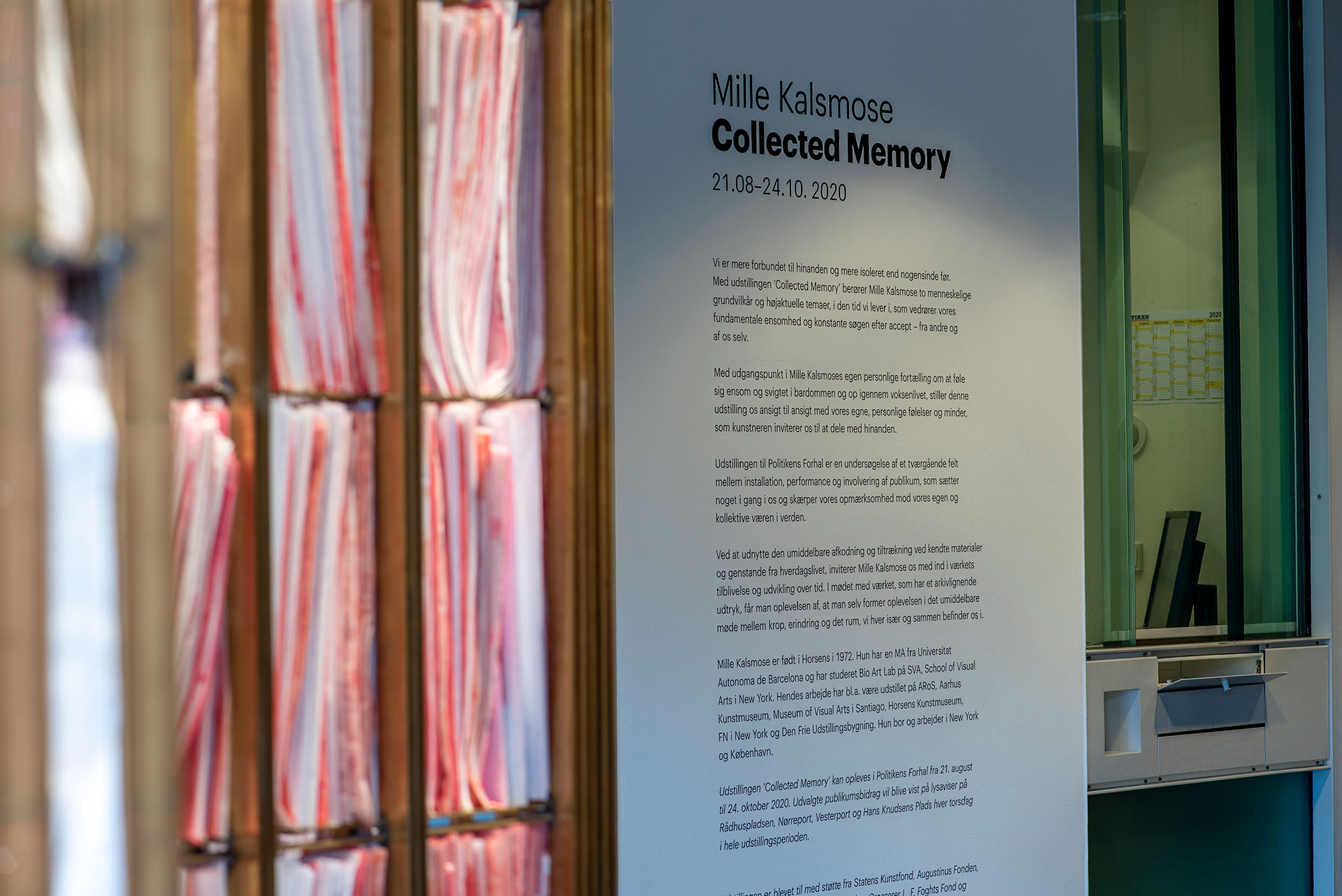Collected Memory
Universal Library and Living Archive
Collective memory is one of Danish artist Mille Kalsmose’s major concerns in her long-term project Collected Memory, a series of sculptural and participatory cabinets made of recycled brass shelves containing a myriad of memories written on folded rice and newspapers. Thought of as a universal library and a living, vibrant archive of humanity, the work will be exhibited in various forms in a wide array of contexts around the world. Mille Kalsmose addresses the sedimentation of individual memories, referring to the idea that these are systematically influenced by the social frameworks in which they are embedded.
Exploring Identity and Social Cohesion
In Kalsmose’s project, memories take the form of paper archives, alluding to the very nature of one’s identity and serving as an extensible source to enable the restitution or at least the questioning of collective memory on another level. Through these works, she continues her exploration of psychological mechanisms, identity, the relationships between the self and others, as well as human existence and its place at the thresholds of earthly ecosystems. Her global work, a constellation of installations including video, photography, and new technologies, touches on the crucial issue of social cohesion, which assumes a singular role in the heterogeneous contexts shaping our contemporary societies.
The Latest Iteration: A Miniaturized Architectural Project
The latest iteration of Collected Memory consists of two large brass cabinets housing folded Chinese paper hand-colored with red pigment, giving the impression of drops of blood. These subtly pleated scrolls serve as memorial archives of anonymous individuals. Both a sculpture and an open library, it becomes the miniaturization of an architectural project as an image of our living spaces, between promiscuity and intimacy. For Mille Kalsmose, it is a question of examining the nature of what constitutes identity, in contrast to the usual stereotypes about nationality, blood relations, or gender. These thousands of pages relate stories, experiences, and statements written by participants who share their words through a QR code and an online database.
Interaction and the Blurring of Boundaries
The work enables interaction with the audience through the physical and emotional act of writing a memory that one wishes to archive. The work itself becomes a receptacle and a living memory shared with a larger community. It invites us to connect with others through remembrance and common intimacy. Each written contribution is saved physically, fixed on paper, and digitally in a database that people from all over the world can access and interact with to consult or share their own individual experiences. In this way, the artist blurs the boundaries between handwriting and digital writing, the physical and the digital world. It is possible to interact physically or at a distance with the work, online. Each week, a selection of writings is published in national newspapers, at Rådhuspladsen, as an extension of the work into the social, public, and media spheres where they are invited to share individual and personal emotions collectively, blending the “small history” with the “Great” History. This work is a diary of the world, which is no longer a utopia but a reality. It is a recording of collective memory, each page being added to a larger body, enriching a broader and more universal history of humanity.
